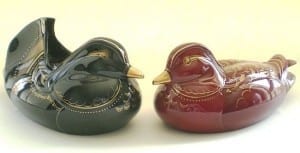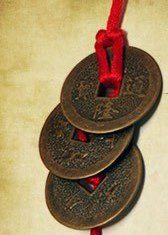What is the year of the Yang Wood Dragon bringing us?
The Year of the Wood Dragon happens once every 60 years. The last time was in 1964 and the next one will be in 2084. The previous Dragon year was 2012 (Water

Western Feng Shui is an “art of placement” and was developed in the mid 60′s by a Tibetan monk, Thomas Lin Yun, who came to the US and believed Classical Feng Shui was too complex and too complicated for Westerners. He, then, founded the Tibetan Black Hat Society, and applied the same simplistic cookie-cutter version of Feng Shui for everybody, using the same 9 areas of a house without taking in consideration people’s ba gua, the date they moved in, the landforms, and really, it had nothing much to do with Classical Feng Shui any longer.
Western Feng Shui has diluted the essence of Classical Feng Shui. 
This “art of placement” uses lots of objects such as Mandarin ducks for love and marriage, Turtles for protection and stability, Koi fish for abundance, Chinese coins tied up with a red string for prosperity, crystals, bamboo flutes, purple pillows, you name it. They are very pretty but fail to bring good fortune.
In Classical Feng Shui, we do not use good luck charms.
In contrast, when strictly applied according to its ancient principles, Classical Feng Shui offers a large spectrum of formulas and tools to build wealth in all its aspects.

Francoise Courty-Dan is a Certified Classical Feng Shui consultant and a member of the International Feng Shui Guild. Over the years, she has helped a multitude of clients improve their wealth, health, career and relationships. She is the Founder of One World Feng Shui, a Los Angeles based consulting agency, available domestically and internationally for residential, commercial and corporate projects.
A dedicated Feng Shui master, she is enthusiastic about her mission to make the world a better place - one space at a time. An advocate of the power of the environment, she believes in balance and harmony and guides people live a happier, healthier and more inspired life.

Francoise Courty-Dan is a Certified Classical Feng Shui consultant and a member of the International Feng Shui Guild. Over the years, she has helped a multitude of clients improve their wealth, health, career and relationships. She is the Founder of One World Feng Shui, a Los Angeles based consulting agency, available domestically and internationally for residential, commercial and corporate projects.
A dedicated Feng Shui master, she is enthusiastic about her mission to make the world a better place - one space at a time. An advocate of the power of the environment, she believes in balance and harmony and guides people live a happier, healthier and more inspired life.


ARE YOU READY TO GET THE BEST OUT OF YOUR LIFE?
Feng Shui helps you live in harmony and fulfill your goals and dreams, Find financial comfort, Enhance your career, Improve relationships and Attract romance, Feel energized and healthier.
Would you like to schedule your complementary evaluation?
The Year of the Wood Dragon happens once every 60 years. The last time was in 1964 and the next one will be in 2084. The previous Dragon year was 2012 (Water
Thanksgiving is the time when many of us reflect on what we are grateful for. I want to personally thank you for your many expressions of loyalty, trust,
Here’s to a bright New Year to you and your loved ones and to what 2023 has yet to offer us! Over the holidays, we,